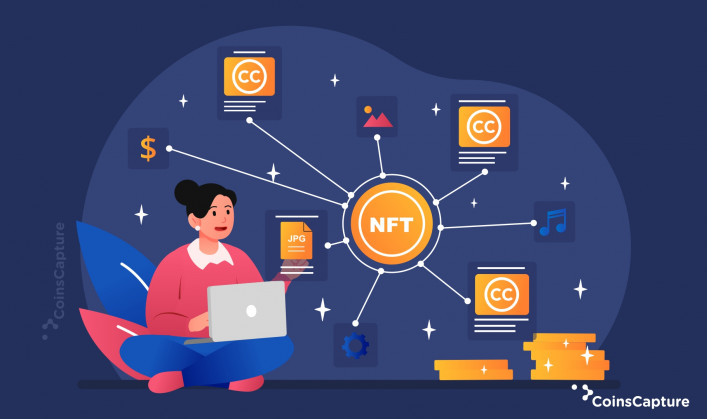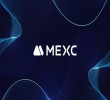7 November 2025
Protecting Your Artwork with the Creative Commons Zero (CC0) NFT
It's exciting to see how blockchain technology and non-fungible tokens (NFTs) are bringing together the creative and technological sectors. You may forgo being named as the creator while using Creative Commons Zero (CC0) NFTs, but you'll still be able to benefit from your production and share it with the world in any way you see appropriate.
Also Read: Mark Zuckerberg "Long-Term Optimistic" On Metaverse
What is CC0 NFTs?
Created with the same spirit as open-source software, CC0 (Creative Common Zero) non-fungible tokens are a boon to the NFT community. NFTs were created with the goal of safeguarding digital assets and intellectual property. As a result of holders of these NFTs holding the IP to their work, a number of projects have benefited, including Bored Ape Yacht Club and CryptoPunks. Holders of NFTs might open up new streams of money by charging other companies, brands, as well as artists to utilize their NFT artwork. With the consent of the NFT holders, other artists, NFT collections, and even conventional enterprises might utilize pictures of nonfungible tokens as a brand-building workout.
Also Read: DWF Labs Strategically Invests In MAD Metaverse
What is a Creative Common Zero License?
With a CC0 license, the original author relinquishes all rights and restrictions on their work, freeing it for anybody to use and alter in any way they see fit. This license indicates that the work is free for everyone to use. A work often enters the public domain only after its copyright has expired. However, under a CC0 license, any work released under that license may be utilized as well as reworked without violating any copyright restrictions. You may use any CC0 licensed work in any way you choose without paying any fees or giving any credit to the original creator. This means the CC0 initiative may be used for profit. Further, you have the freedom to develop a derivative work based on the original CC0 licensed artwork and keep all copyrights to that work.
How Did The Rise of CC0 NFTs Happen?
While just one major project went the CC0 path in 2021, numerous large NFT projects took this tack throughout the summer of 2022. Nouns was perhaps the first major NFT project that introduced the CC0 license scheme. In short order, numerous other non fungible token initiatives, such as Moonbirds, CrypToAdz, Cryptoteddies, as well as Loot, followed suit and adopted the CC0 model. As a result, NFT compilations that take influence from existing CC0 collections may do so with more latitude. In order to expand the original NFT set's brand awareness, it is common practice for designers to take inspiration for their derivative NFTs from the parent NFT collection. Derivatives gained greater freedom as the number of CC0s grew. Of course, this has had practical repercussions for the NFT society's corporate approach choices, which are ultimately made by the holders and project teams of these tokens.
Why Should You Use a CC0 License on your NFTs?
It has been suggested that an NFT's main basic value lies in its rarity and the owner's monopoly over licensing the work in question. With the introduction of CC0 licenses, meanwhile, this hypothesis has already been slain, and a whole innovative horizon has been revealed for the NFT community, producers, as well as consumers. Many creators nowadays are following the "no rights" trend and releasing their work into the public domain without protection for their intellectual property. All of this effort is made to boost their profile and keep their fans excited for upcoming works. These aren't the only gains you may make by giving your NFT a CC0 license, however.
What are the Implications for the NFT Community?
The CC0 method presents certain difficulties, especially for the single NFT user who would want to sell their coins for fiat currency. Those NFTs which have not adopted CC0 have traditionally relied on holders to provide licenses for the use of their nonfungible tokens to various enterprises, brands, as well as artistic endeavors. It has been shown that communities using non-fungible tokens that have chosen the CC0 path have had dissatisfied local residents as well as corporate drawbacks. By reducing IP barriers, CC0 paves the way for wide dissemination of NFT's artwork and brand. Furthermore, in order to profit from the NFTs' intellectual property, a few of the leading community members who own NFTs also possess non-fungible tokens based on their profile pictures (PFPs). As a result of the non fungible token project team's decision to follow the CC0 path, NFT holders may have missed out on lucrative license contract prospects in certain cases. Like open source software, this method has both benefits and drawbacks. Local residents who choose to use the intellectual property rights they held over the NFTs may experience some short-term negative consequences as a result. On the other hand, many see the long-term value in establishing credibility for the brand in a transparent manner.
Popular CC0 NFT Projects
Here are three of the most popular CC0 NFT projects:
1. Nouns
The Nouns project is one of the most financially successful CC0 endeavors, with approximately $60 million in its coffers. The initiative was initiated by a team of seasoned developers and NFT collectors who want to conduct a CC0 test inside the NFT society.
2. Goblintown
Goblintown has been slammed for its visually displeasing NFTs, although all 10,000 of its characters are available under Creative Commons Zero. Despite this, some NFT alums, Steve Aoki included, are supporting our endeavor. Once upon a time, over 40% of OpenSea's trading volume was made up of NFT derivatives issued by Goblintown.
3. CrypToAdz
The developer of this project is a mystery person who uses the alias Gremplin. CrypToAdz debuted their CC0 series soon after Nouns, and it was derived from CryptoPunks, one of the most traded NFT collections on OpenSea.
Disclaimer: The author’s thoughts and comments are solely for educational reasons and informative purposes only. They do not represent financial, investment, or other advice.






